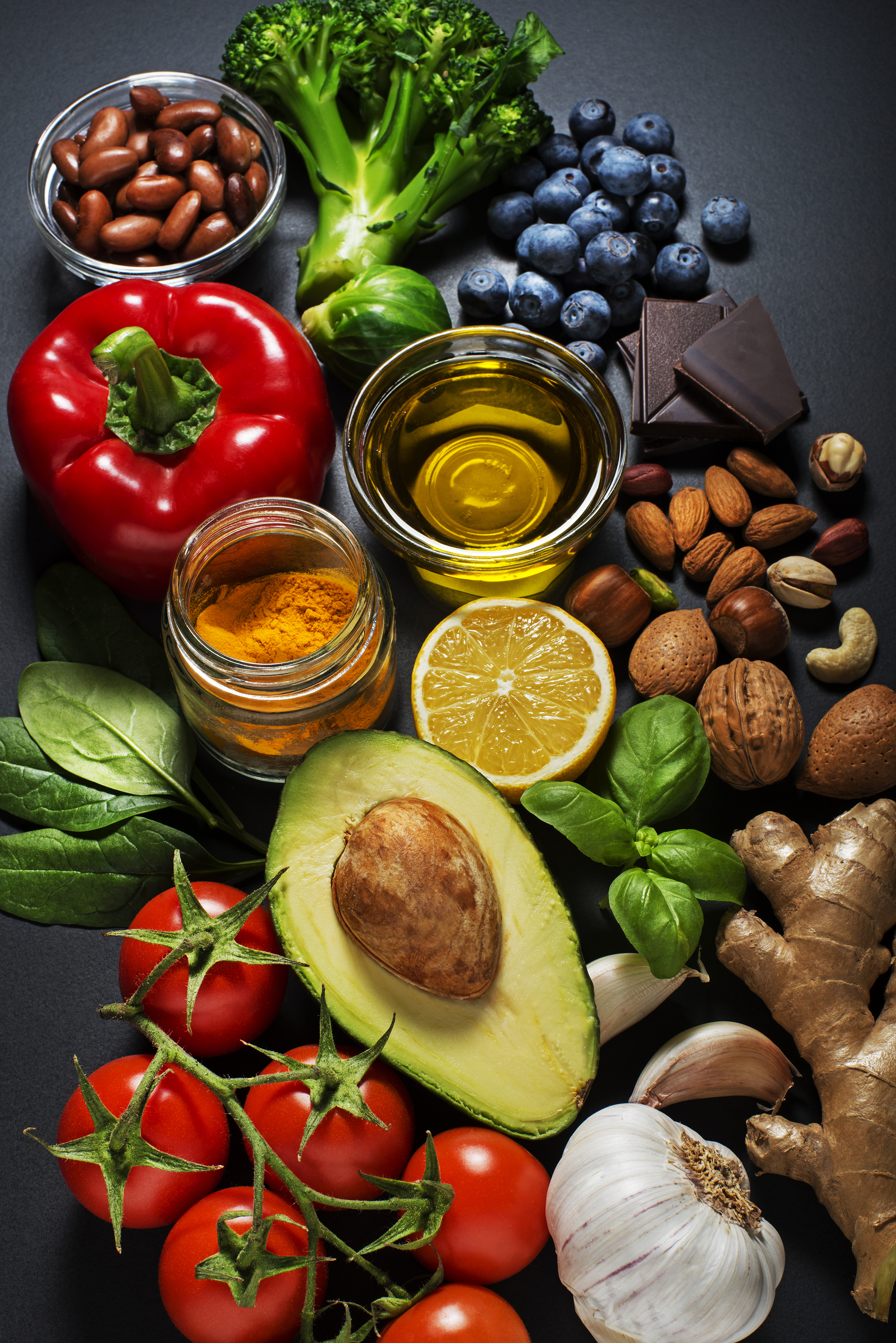The DASH Diet, developed in part at Pennington, lowers blood pressure and cancer risk
It’s not a magic bullet, but if the thought of cutting out carbs, dairy, meat or any other food group causes you to wince, the DASH Diet could be your answer for healthy eating.
Unlike other popular diets, the DASH Diet doesn’t totally rule out any food group (cheese and carb lovers, you can breathe your sigh of relief now). Instead, the DASH Diet encourages a higher intake of magnesium, potassium, calcium, fiber and protein, and less sodium and fat.
To hit those targets, the diet recommends that followers consume 9 to 12 servings of fruits and vegetables, 6 to 9 servings of whole grains, 2 to 3 servings of low-fat or nonfat dairy, and 2 servings of lean meat daily, along with up to 7 servings of nuts, seeds and legumes a week.
“It’s really more of an eating pattern than a diet,” says Catherine Champagne, a registered dietitian at LSU’s Pennington Biomedical Research Center who played a leading role in the development of the diet in the 1990s. “It’s easier to tell people to have a certain number of servings of fruits, vegetables, dairy, meats and carbs than to recommend a certain number of calories.”
A diet that’s easier to follow? Check. But what about one that can help you lose weight, reduce blood pressure, improve your lipid profile, and cut both your risk of diabetes and your risk of cancer? The DASH Diet does all that too.
“Fruits and vegetables are very nutrient-dense, and that is probably one of the most important reasons it has beneficial effects for a number of chronic conditions like cancer,” Champagne says.
Short for Dietary Approaches to Stopping Hypertension, the DASH Diet was originally created because the National Institutes of Health wanted to see if blood pressure could be reduced by diet alone. The very first iteration of the diet was extremely successful—it lowered hypertension as much as commonly used blood pressure medication at the time without even cutting down on sodium, Champagne says. Just the mere addition of more micronutrients like magnesium, calcium and potassium, along with increasing fiber and reducing fat, did the trick. When Champagne and her fellow scientists tested the second version of the diet that cut sodium down to the current recommendation of 2,300 milligrams of sodium daily, they found even better drops in blood pressure.
“The results were pretty amazing,” Champagne says. Over the course of the study, the diet helped people drop their systolic blood pressure significantly: 11 points in hypertensive people, although people who had borderline high blood pressure and people with already healthy blood pressure saw benefits to their blood pressure as well. (The American Heart Association recommends people maintain a blood pressure of 120/80 or less).
These outcomes are the reason why U.S. News & World Report has named the DASH Diet a top diet for nine years running, consecutively winning accolades for helping control diabetes, improving heart health, producing weight loss and being easy to follow.
Jon Seal, a Baton Rouge artist, can attest to the benefits of the DASH Diet.
“I lost 25 pounds in a little over two months. My systolic blood pressure dropped 25 points,” Seal says. “Besides the diet, I did nothing different.”
For people who want to give the DASH Diet a try, Champagne recommends starting slowly by figuring out where you can incorporate more fruits and vegetables, how you can swap out sweets for whole grains, and how you can incorporate lean meats.
“Maybe you eat fried chicken once a week and you can swap it out for once a month,” Champagne explains, detailing the ways she makes the DASH Diet work for her at home: “When I make gumbo, for instance, I take the skin off the chicken and look for lower-fat versions of sausage. I use lots of vegetables, onions, garlic and spices so I get a lot of flavor from those things, not just salt.”
If you need inspiration for the structure of the DASH Diet, Champagne compares the DASH Diet to the popular Mediterranean diet, which was recently named the #1 Best Diet by U.S. News & World Report. Neither focuses on strictly limiting calories and both encourage fresh fruits and vegetables, nuts and legumes, lean meat and healthy oils.
“There are a lot of diets that are better for weight loss, but the question is: are they as healthy as the DASH or Mediterranean diets? I think you want a healthy eating pattern that you can stick to,” Champagne says. “A lot of the other diets out there will cause weight loss but they’re not easy to stick to, and if they are eliminating entire food groups, they might not be the healthiest of diets or the most sustainable over time.”
She follows the DASH Diet, so Champagne knows both from the scientific research she conducted and from her own life that the DASH diet is effective. Bottom line, says Champagne? “It works.”

DASH Details
Get started with the DASH Diet by following these expert tips:
Re-evaluate serving size. A serving of orange juice may be 3/4 cup, so 1 1/2 cups of orange juice equals two servings of fruit. Similarly, a sandwich with two slices of bread can easily contain 2 of the 6 servings of whole grains daily.
Look for foods with naturally occurring calcium, magnesium and potassium. Leafy greens contain a lot of magnesium, while bananas, melons and dried fruits like apricots and prunes are high in potassium. While we often think of calcium as coming from dairy, lots of vegetables like kale, broccoli and okra are good sources of calcium.
Incorporate more fiber. Fruits are excellent sources, including raspberries, oranges, pears, apples and strawberries.
Switch out refined grains for whole grains. Swap white bread, pasta and white rice for whole-grain versions, and try to limit the sweets.
Focus on fresh. Use fresh or frozen fruits and vegetables to avoid sodium found in canned vegetables.
Eat a variety of foods. Not only is it helpful on the bank account to eat in-season fruits and vegetables, but you’ll be less likely to get bored by eating the same things repeatedly.
Watch the oil. Avoid fried foods as much as possible. Consider using olive oil and roasting, baking or grilling foods in place of frying.
Download a free PDF of the DASH Diet eating plan here.












